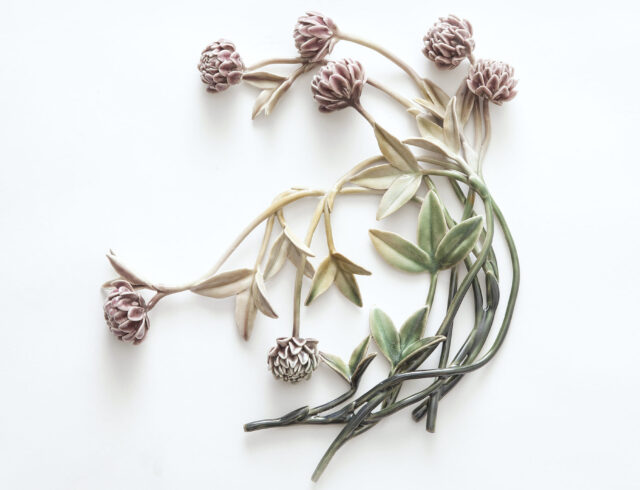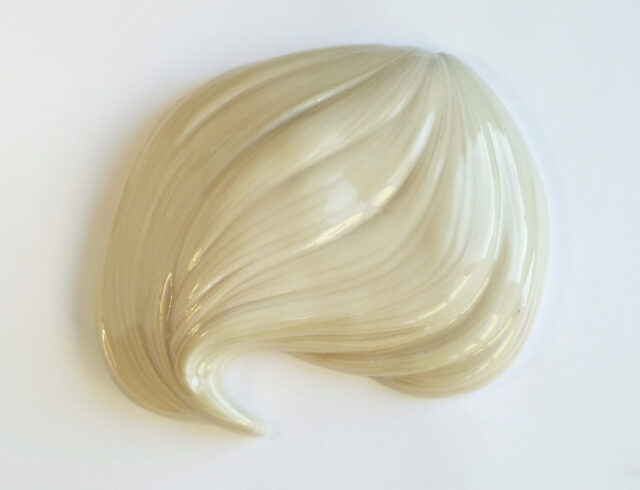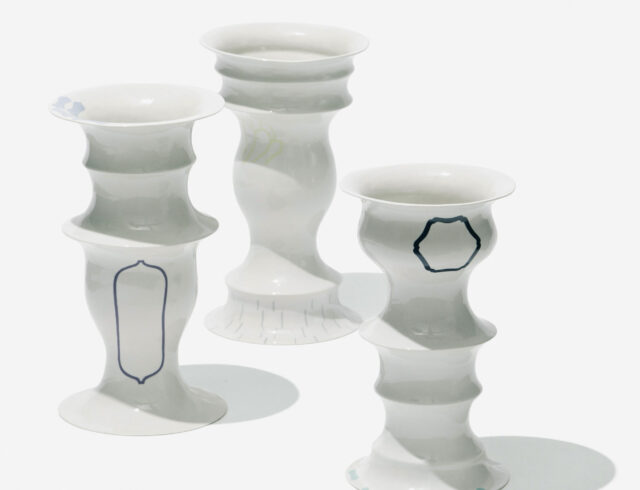
Om Marianne Nielsen


The Logic of Sentiment
In “The Mediation of Ornament,” Oleg Grabar suggests that we consider the motifs and patterns of the decorative arts to be “intermediaries.” They may seem to serve merely as embellishment, but he likens them to “catalytic agents, or code carriers in genetics or biology.” If this is true, then Marianne Nielsen is engaged in some genre of cryptology. Her work invariably displays a savvy manipulation of coded vocabularies of form, and a talent for magnifying the slippage between a symbol and its traditional meaning. →
Between imitation and abstraction
There are ceramists whose primary reason for working with vases, jars and dishes is an excitement with the material itself and the many textural possibilities. And then there are ceramists whose reason is form, always subordinating colours and glazes to their ideas of form. There are those who just want something to decorate – and there are those who want to provide their surroundings with sensible objects for everyday use. →